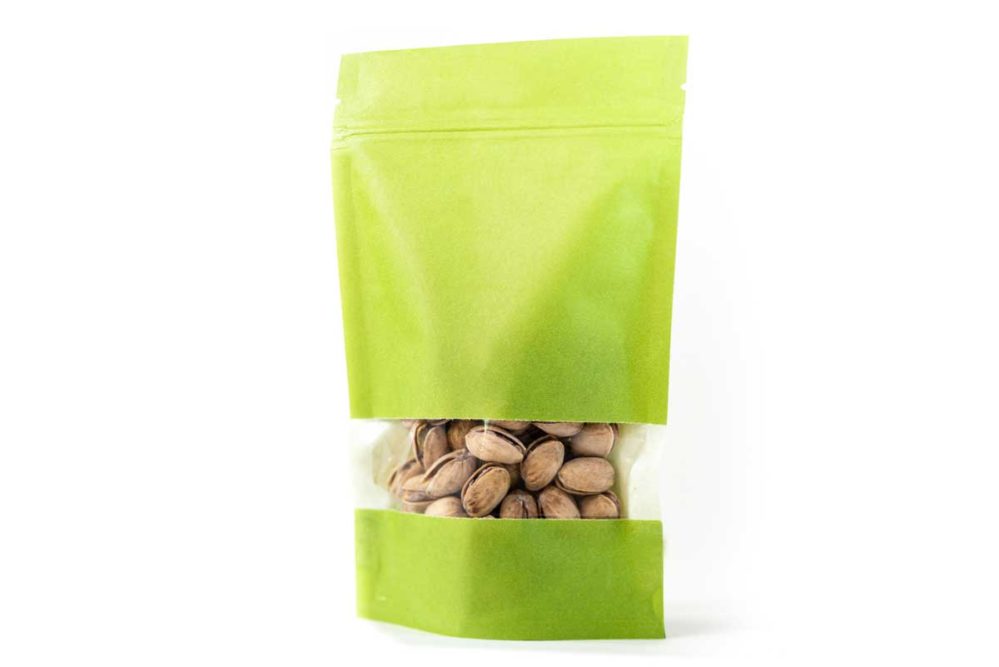The modern baking and snack consumer wants packaging that keeps products fresh and tasty as long as possible and offers easy-to-eat, single-serve portions for their on-the-go lifestyle. These consumer demands are driving packaging designers to look toward flexible packaging options.
Flexible packaging now accounts for close to 40% of global packages, according to the Flexible Packaging Assessment Report from PMMI Business Intelligence, part of PMMI. Within flexible packaging, food remains the largest industry by end-use, with biscuits/snack bars and sweet and savory snacks combining to represent the largest growth segment among areas exceeding industry growth rates. This aligns with consumers’ increasing awareness of the health benefits of snacks such as nuts, dried fruits and nutritional bars.
Per PMMI’s report, snack food packaging designs that require smaller pouches for nuts and dried fruit, nutrition bars and even mix-in protein powders facilitate the healthy eating trend and stand to support growth through 2022. CPG companies recognize that food, in general, is experiencing a higher increase in production and sales using flexible packaging, and is moving many in the snack food sector to embrace this format. The industry is now gearing toward on-the-go packaging, user convenience, smaller pack sizes and easy-to-open features. One example cited in the study notes a baking syrup manufacturing company transitioning its products from a can with a pump to a pouch with a dispenser, stating the pouch version is more cost-efficient and easier to make.
While flexible packaging is more sustainable and uses less energy to make, these desirable qualities for CPGs and consumers become a design challenge when looking at end-of-life recycling. There is currently a lack of recycling options for multi-material laminated films, such as snack bags and foil pouches, which are difficult to separate into their various material substrates.
Although many packaging material companies worldwide are scrambling to develop sustainable packaging materials to reduce environmental impact, it is a time-consuming and expensive process. CPGs need to build flexibility into their supply chain as obtaining environmentally friendly materials is not as easy as acquiring more traditional packaging materials. The industry is responding to these supply chain challenges with new initiatives to improve the sustainability profile of flexible packaging. These actions include developing new technologies, such as flexible packaging sortation to drive recycling and collection and auto-sortation of flexible materials. Several manufacturers are continuing to identify techniques to make the collection and sortation of flexible packaging waste feasible and economically friendly. Others continue to investigate new materials for flexible packaging, including compostable or bio-based structures.
According to the report, baked foods are increasing the use of bags and pouches because of the lower cost, shelf-life extension and product visibility. Adding modified atmosphere packaging (MAP) can extend shelf life even more, especially when baked foods include fruits and vegetables as ingredients. Coupling the advances of MAP and high-performance films give CPGs products with excellent mechanical strength and chemical resistance against bacteria growth.
As the industry continues to navigate through the challenges posed by the coronavirus (COVID-19) and the resulting impact on flexible packaging manufacturers, suppliers can visit PMMI's COVID-19 resource page for helpful insights on ways to adapt and evolve in a new normal. For further support in overcoming operational challenges and uncovering helpful solutions, Pack Expo International and Healthcare Packaging Expo, set for November 2020, will serve as North America's resource for packaging technologies across a wide range of industries.





